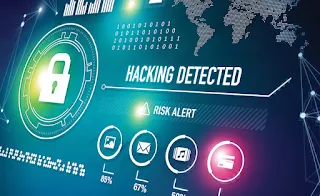#Introduction to Cyber Threats: Part 7
In the previous parts, we defined some key terms and concepts related to cyber threats, such as vulnerability, exploit, attack vector, threat actor, and threat intelligence. We also discussed the main motivations and goals of cyber attackers, the different types of cyber threats, some best practices for cyber threat prevention and mitigation, some examples of cyber attacks and their impacts, some lessons learned and recommendations for cybersecurity, and some resources and tools for cyber resilience.
In this part, we will explore some challenges and opportunities for cybersecurity in the future. We will also look at some trends and predictions for cybersecurity in the coming years.
## Challenges and Opportunities for Cybersecurity
Cybersecurity is a dynamic and complex domain that faces many challenges and opportunities in the future. Some of the challenges and opportunities are:
- **More complex cybersecurity challenges**:
Digitalization increasingly impacts all aspects of our lives and industries. We are seeing the rapid adoption of machine learning and artificial intelligence tools, as well as an increasing dependency on software, hardware, and cloud infrastructure. These technologies offer many benefits but also pose new risks and vulnerabilities that need to be addressed. For example, machine learning models can be manipulated or corrupted by adversarial inputs or attacks. Software or hardware components can have hidden backdoors or malicious code. Cloud services can be compromised or disrupted by cyberattacks. Cybersecurity needs to keep pace with these technological developments and ensure their security and reliability.
- **More diverse cybersecurity threats**:
Cyber threats are becoming more diverse and sophisticated, as cybercriminals and nation-state actors use various tactics, techniques and procedures (TTPs) to achieve their goals. We are seeing more hybrid attacks that combine multiple attack vectors, such as phishing, malware, denial-of-service, or supply chain attacks. We are also seeing more targeted attacks that focus on specific entities or sectors, such as advanced persistent threat (APT) attacks or ransomware attacks. Cybersecurity needs to be able to detect and respond to these diverse and sophisticated threats, using threat intelligence, analytics, and automation.
- **More global cybersecurity collaboration**:
Cybersecurity is a global issue that requires global collaboration among various stakeholders, such as governments, businesses, civil society, academia, and international organizations. Cybersecurity needs to address the cross-border nature of cyber threats, as well as the legal, ethical, and cultural differences among countries. Cybersecurity also needs to promote the development and adoption of common standards,
guidelines,and best practices that can enhance the security and interoperability of systems and networks.
Cybersecurity also needs to foster trust and cooperation among stakeholders to share information,
resources, and expertise to prevent and mitigate cyber threats.
- **More human-centric cybersecurity**:
Cybersecurity is not only about technology but also about people. People are both the weakest link
and the strongest asset in cybersecurity. People can be victims, perpetrators, or defenders of cyber threats.
Therefore, cybersecurity needs to be more human-centric, meaning that it should consider the human factors such as behavior, psychology, culture, or ethics that influence cybersecurity. Cybersecurity also needs to empower people with the skills, knowledge, and awareness they need to protect themselves
and their data from cyber threats. Cybersecurity also needs to respect people's rights
and values, such as privacy, freedom, or democracy, when designing and implementing cybersecurity solutions.



